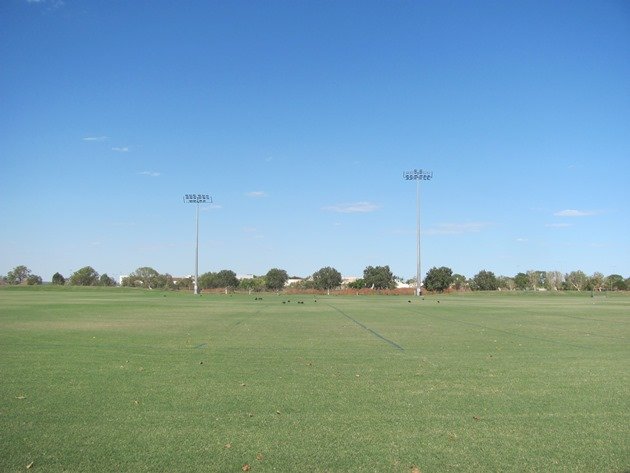
I mentioned last week that the lack of rain and warmer temperatures over the past few months have had a devastating effect on the reef along Broome’s coastline resulting in coral bleaching. The lack of rain has also resulted in the local ephemeral lakes not filling up and birds having to move to town for both food and water. One of the best places to observe birds in Broome apart from the Poo Ponds are any of the sport ovals. The largest oval is close to the airport and accessible by the entrance road to the public swimming pool. The grass area is approximately 370 metres long and 220 metres wide, because it incorporates both the Father McMahon oval and the Joe “Nipper” Roe oval and they were opened 30th May 2009. During the establishment of the ovals it was an excellent place to go birding due to the constant watering of the area and it continues to be an excellent place to visit. On the rare occasion that a Red-throated Pipit shows up in Broome it is likely to be at this location and very convenient to the airport for those people that fly up to Broome to see it!
Earlier this year we observed the lone Black-tailed Native-hen at this oval and now we have even more variety of birds due to the lack of water and food beyond the town. During the past week we have observed over eighty Straw-necked Ibis feeding on the grass and there is very little disturbance other than when sport is being played. The next species which is easily observed at the moment is the Eastern Yellow Wagtails and their numbers have been in excess of forty every day that we have visited. Unlike the Eastern Yellow Wagtails at the end of last year that showed very little yellow these birds are now very yellow and no doubt considering their move north in the very near future.
Straw-necked Ibis, Masked Lapwings and Little Curlew in the shade of a light tower
Eastern Yellow Wagtail
Another species that we don’t always observe on the ovals at this time of year, but are usually observed when they first return form the north from September onward, is the Little Curlew. There have been three Little Curlew present for the past week feeding on the grass and no doubt soon they will make their move north too.
Little Curlew and Straw-necked Ibis
Masked Lapwings are also present in good numbers and are generally in the shade whether that is under a tree or in the shade of one of the light towers!
Masked Lapwing in the shade of the light tower
The sneakiest bird at the oval this week is a Snipe species, which could be either a Swinhoe’s Snipe or a Pin-tailed Snipe. Either way it is very cryptic and lies flat in the taller grass and then flies straight over the fence to the edge of the airport runway! Thankfully we don’t have too many flights coming into Broome and it remains on the nearside of the runway until it feels safe and then returns to feed on the oval.
The brighter green area on the slope is the feeding and hiding area of the Snipe!
Other birds taking advantage of the oval include Crested Pigeons, Magpie-larks, Black-faced Woodswallows, Zebra Finch, Black Kites, Whistling Kites, Willie Wagtails, Singing Honeyeaters, Pied Butcherbirds and Torresian Crows.
Crested Pigeon and Black-faced Woodswallows
There are several native trees in flower at the moment in the car-park and they are attracting the Little Friarbirds.
Little Friarbird enjoying nectar
Despite most days in the past week being 38c/100f the humidity has been very low and even visiting the oval in the middle of the day has been very productive for birds and will no doubt be for some time yet. You don’t have to attend the oval for “sport” at all! You can have a relaxing stroll around the area and take in some of our local bird-life!


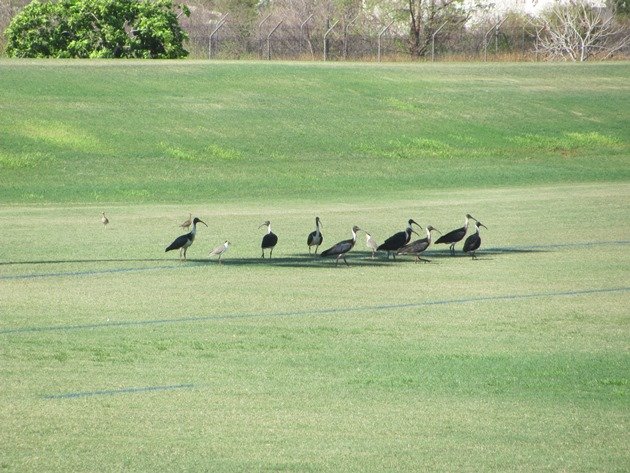
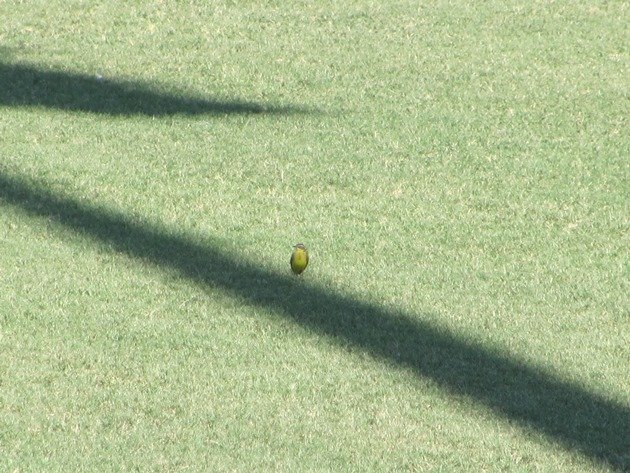
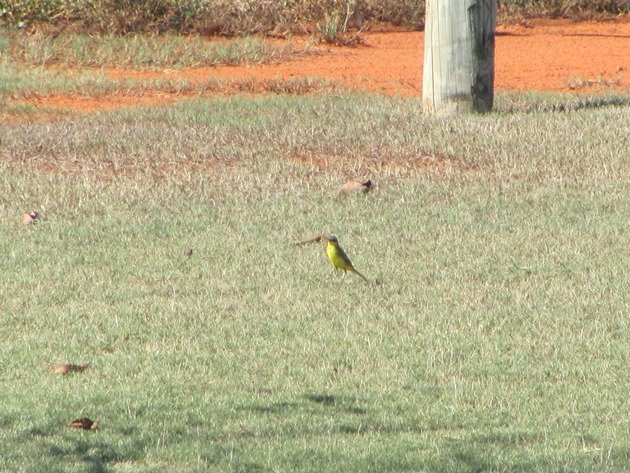
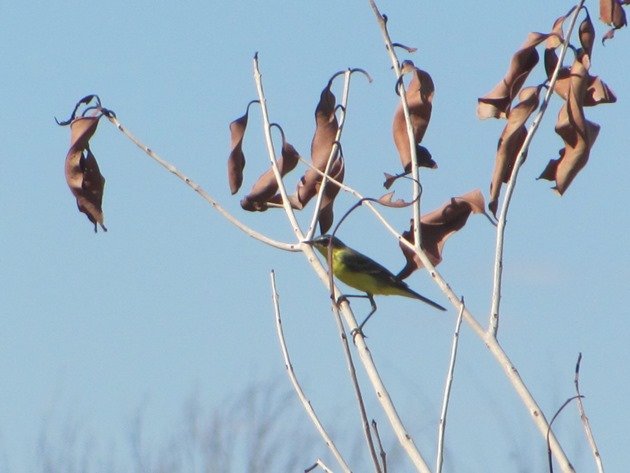
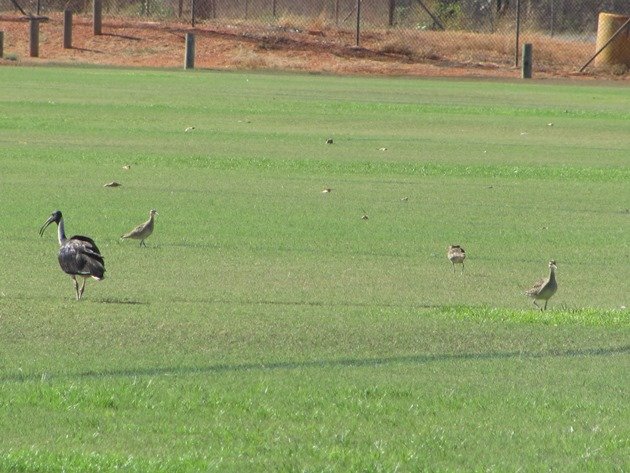
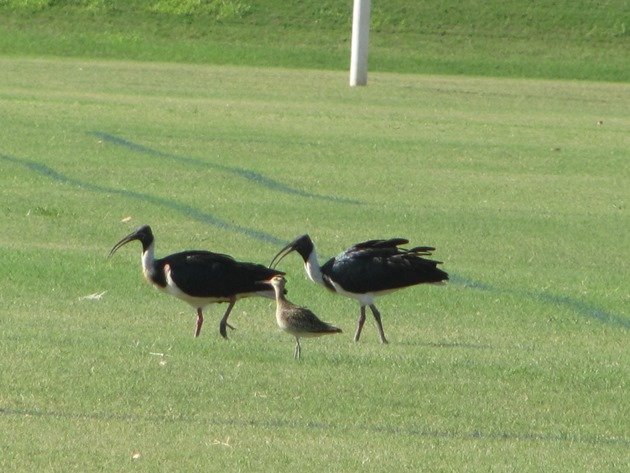
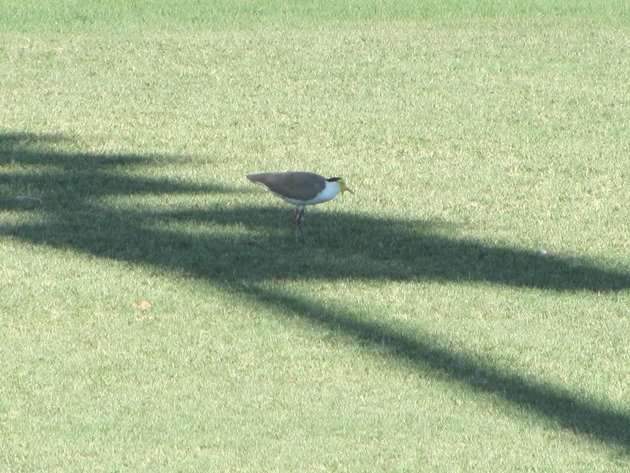
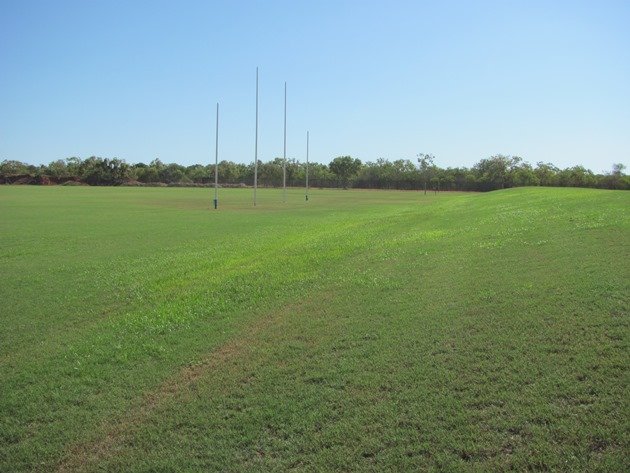
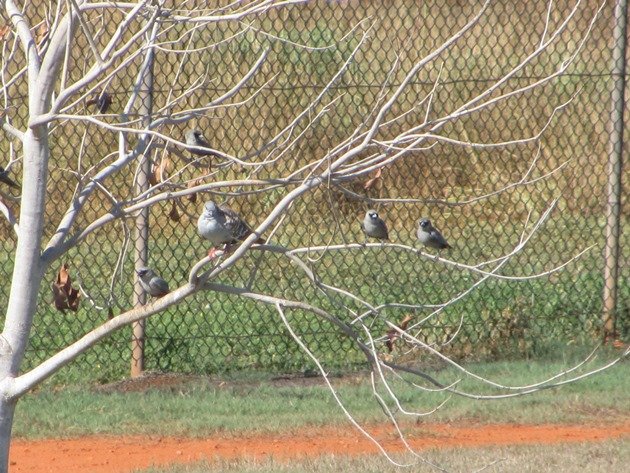
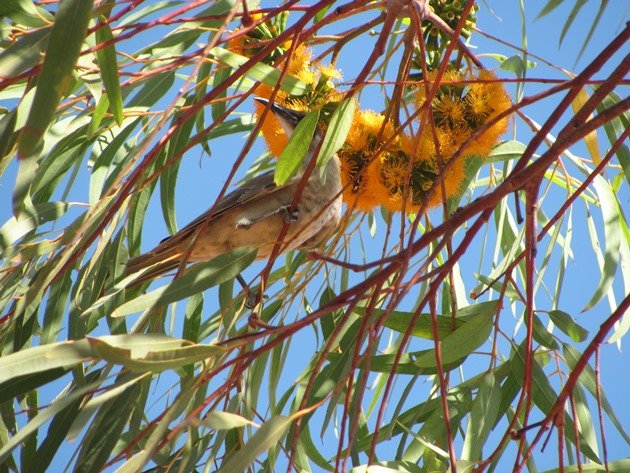











Little Curlews – very sweet. Actually, my guess is that the birds are gathering there because it is easier to see Tiger Snakes. 🙂
Oh, of course! 🙂